
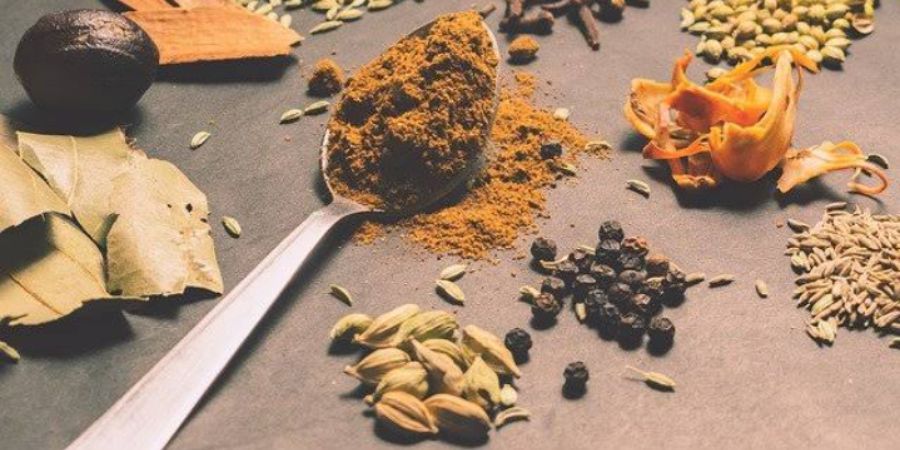
Hlo Friends, how are all of you???
Ok, don't waste your more time we will go to direct on topic
Today we will talk about how to check adulteration in spices
If you want to know about adulteration then go on the link which I share in this blog where I already discussed many types of adulteration in different food products.
Detection of foreign resin in asafoetida
First of all, you can take a stainless steel spoon and burn a small amount of asafoetida.
Notice pure asafoetida burn like camphor. While adulterated asafoetida didn't produce flame bright flame-like camphor.
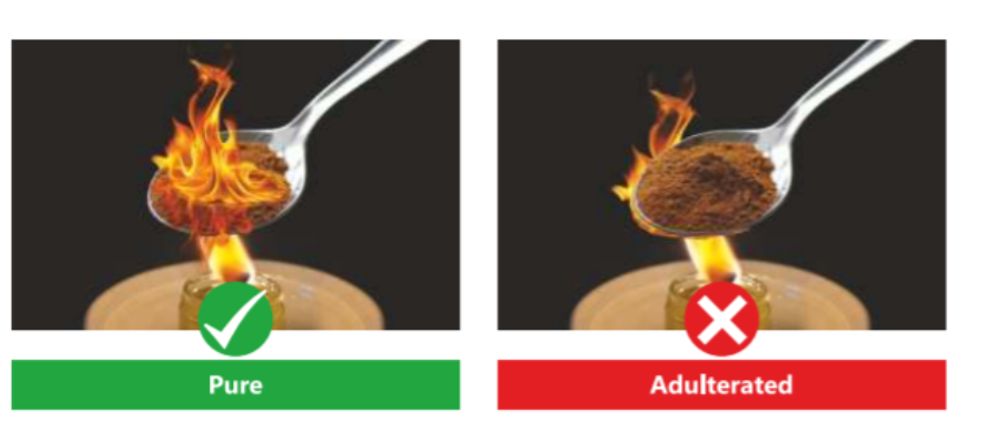
Detection of papaya seed in black pepper
Spread black pepper on white paper and observe the sample using a magnifying glass. Black pepper is brown. It has a wrinkled surface with a pungent taste and characteristic smell.
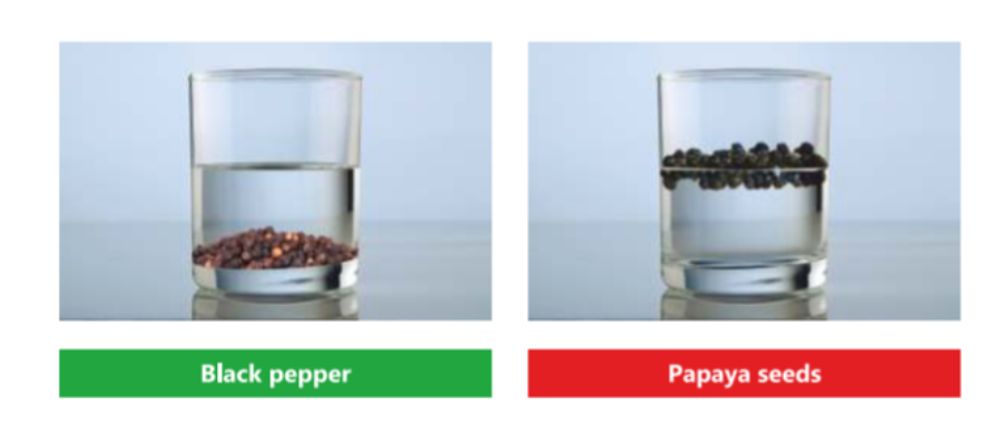
While papaya seed has a shrunken surface and oval shape. It is greenish-brown or blackish brown.
Detection of synthetic color and sawdust in chili powder
Take a sample in a transparent glass of water if synthetic color is added it will immediately start descending with water.
For checking sawdust in chili powder take a sample in a transparent glass of water if sawdust is added it immediately start floating on the surface and chili powder settles down.
Detection of lead chromate in whole turmeric and synthetic color in turmeric powder
Add a small quantity of turmeric whole to a transparent glass of water. Whole pure turmeric didn't leave any color. While adulterated turmeric looks bright in color and leaves color immediately in water.
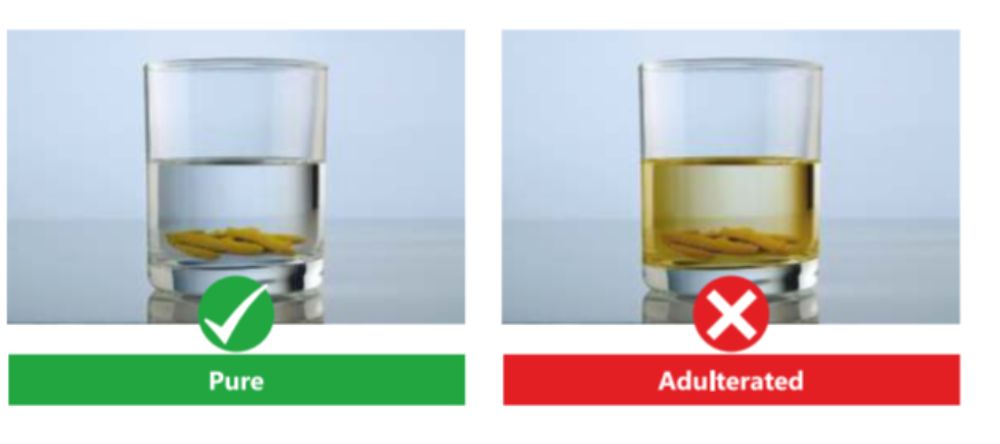
Add sample in water pure turmeric powder leave light yellow color while adulterated with synthetic powder leave dark yellow color.
Differentiate with common salt and iodized salt
Cut a piece of potato then add salt and wait for a minute. Add two drops of lemon juice. If it is ionized salt then blue color is appears. If it is not any color then that is a common salt.
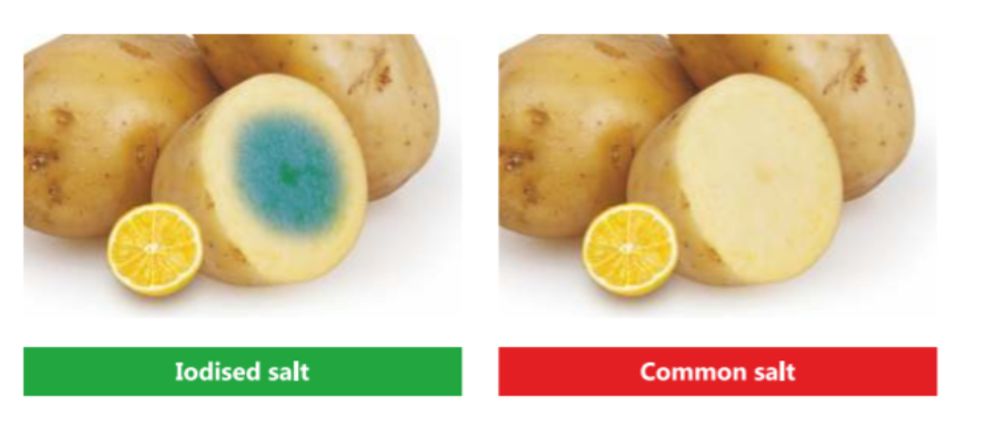
Detection of grass seeds with charcoal dust in cumin seeds
Rub a small amount of cumin seed in the palms if the palm turn black then cumin is adulterated.

Detection of argemone seed in mustered seed
Take small quantities of mustard seed in the glass plate and examine visually mustered seed have a smooth surface when pressed it is yellow in inside while argemone seed has a grainy, rough surface and are black while pressed it is white in inside.
So always be aware of different types of adulteration in food and always check before purchase.
Stay safe, stay healthy
Thank you 😊


